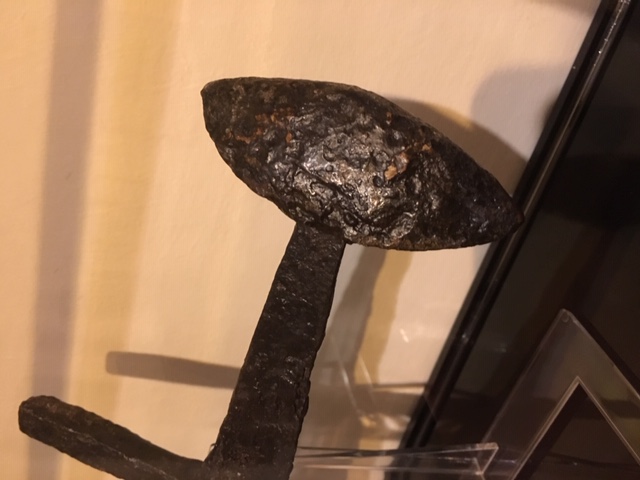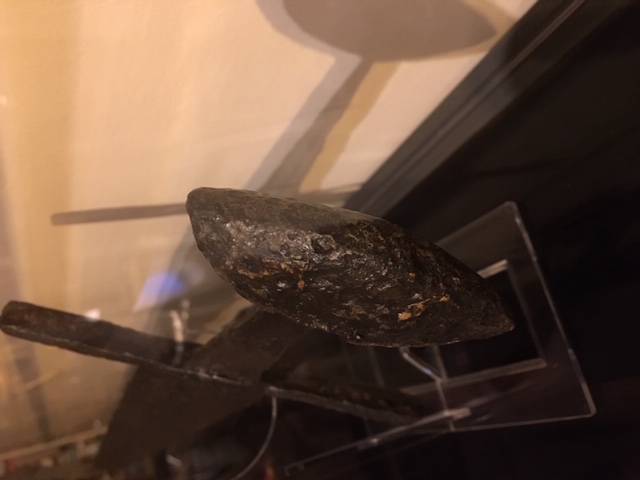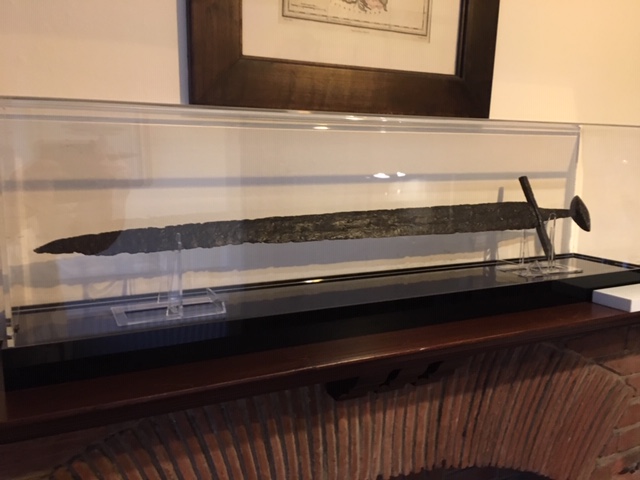Hi everyone,
We don't always get a good look at the appearance of the peening on swords in photographs.
I am interested in what folks know about how the peening was finished in brazil nut (and tea cozy) pommels.
We see some reproductions (like Albion's) who seek to blend the peen-end into the pommel and others who leave the end of the peen.
I've even seen two high end makers reproducing the St. Maurice of Turin sword finish the peen differently when both are seemingly trying to faithfully recreate the original.
What was done historically? I am guessing both were but am not sure.
Thanks for your help!
Do you mean blended, or fairly obvious? I mean, it seems clear that peen blocks were not used (at least not commonly).
The photos of brazil nut swords I have seem to show a smooth profile, but we aren't typically shown the peen. My guess is that blended would be most usual, but that's just based on examination of photos that do not show a proud peen.
Hopefully, someone fortunate enough to have inspected some in person can confirm or deny that.
The photos of brazil nut swords I have seem to show a smooth profile, but we aren't typically shown the peen. My guess is that blended would be most usual, but that's just based on examination of photos that do not show a proud peen.
Hopefully, someone fortunate enough to have inspected some in person can confirm or deny that.
Mostly, on brasil nut pommels, we will find flattened and small ends, almost leveled with the surface of the pommel`s top.
However it will also depends on the smith`s style and the pommel shape.
We can say these types are peened flat, for the most of the cases and comparing with later pommels.
You can find many pictures showing this detail in web, incl. St Maurice from Turin sword.
However it will also depends on the smith`s style and the pommel shape.
We can say these types are peened flat, for the most of the cases and comparing with later pommels.
You can find many pictures showing this detail in web, incl. St Maurice from Turin sword.
| Maciej K. wrote: |
| Mostly, on brasil nut pommels, we will find flattened and small ends, almost leveled with the surface of the pommel`s top.
However it will also depends on the smith`s style and the pommel shape. We can say these types are peened flat, for the most of the cases and comparing with later pommels. You can find many pictures showing this detail in web, incl. St Maurice from Turin sword. |
Hi Maciej
So you are saying we would not normally see a small “button” of the pommel end. It would have been blended into the surface of the pommel?
It is not a rule, but for the most of them we will not see it.
check attachment please. that one is from MAAS, Australia, ca. 1050.
... and they mostly look like this.
 Attachment: 135.35 KB
Attachment: 135.35 KB
[ Download ]
check attachment please. that one is from MAAS, Australia, ca. 1050.
... and they mostly look like this.
[ Download ]
That’s a lovely pommel! Thank you for sharing that.
The historical examples which I've seen in person (in the Kelvingrove in Scotland, mostly) and the photos I've seen all had the peen "blended" - hammered or filed down to the point where it was nearly indistinguishable from the curve of the pommel (usually only distinguishable at all because of corrosion, in fact). There may be counter-examples that I'm not aware of, of course.
Thanks everyone,
It sounds like the consensus is that the peen was finished in such a way to make it largely indistinguishable from the rest of the pommel's surface.
This is good to know and may show that some manufacturers may be incorrectly finishing this detail.
It sounds like the consensus is that the peen was finished in such a way to make it largely indistinguishable from the rest of the pommel's surface.
This is good to know and may show that some manufacturers may be incorrectly finishing this detail.
Jeremy,
Here's a photo I took of a sword kept in the Germanisches Nationalmuseum in Nürnberg. You can see that the peen is not entirely flush, and the seam is visible.
 Attachment: 917.01 KB
Attachment: 917.01 KB
[ Download ]
Here's a photo I took of a sword kept in the Germanisches Nationalmuseum in Nürnberg. You can see that the peen is not entirely flush, and the seam is visible.
[ Download ]
Thanks Craig,
So on the photo we see an example with a more visible seem so the finishing to the point of near invisibility must not be the hard and fast rule.
Thanks!
So on the photo we see an example with a more visible seem so the finishing to the point of near invisibility must not be the hard and fast rule.
Thanks!
As discussed off-line with Jeremy, I also prefer the blended look whenever possible. But its hard to get craftsmen and artists to follow rules. I doubt that has changed since the first cave drawing.
| Maciej K. wrote: |
| It is not a rule, but for the most of them we will not see it.
check attachment please. that one is from MAAS, Australia, ca. 1050. ... and they mostly look like this. |
Just to clarify, currently housed in the Museum of Applied Arts and Sciences in Australia, object number H6923, found in England.
On some Brazil nut pommels, we see the tang protruding through the top of the pommel. Is this merely a result of age and degredation, with the pommel slipping down the tang? Or are there some instances of proto-peen block?
The example I have. The peening is almost invisible but if you angle the light right, you can see a slight difference in the centre of the pommel that may be the peening end,
 Attachment: 78.33 KB
Attachment: 78.33 KB

 Attachment: 63.99 KB
Attachment: 63.99 KB

 Attachment: 78.04 KB
Attachment: 78.04 KB




Here's another example of a sword that does not have a peen flush with the pommel, but instead slightly protrudes. You'll have to look closely to see it.
 Attachment: 9.4 KB
Attachment: 9.4 KB


Page 1 of 1
You cannot post new topics in this forumYou cannot reply to topics in this forum
You cannot edit your posts in this forum
You cannot delete your posts in this forum
You cannot vote in polls in this forum
You cannot attach files in this forum
You can download files in this forum
All contents © Copyright 2003-2006 myArmoury.com — All rights reserved
Discussion forums powered by phpBB © The phpBB Group
Switch to the Full-featured Version of the forum
Discussion forums powered by phpBB © The phpBB Group
Switch to the Full-featured Version of the forum